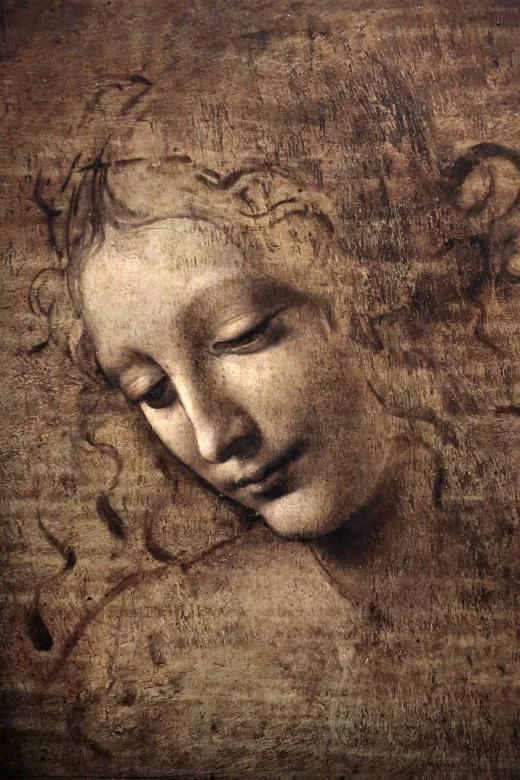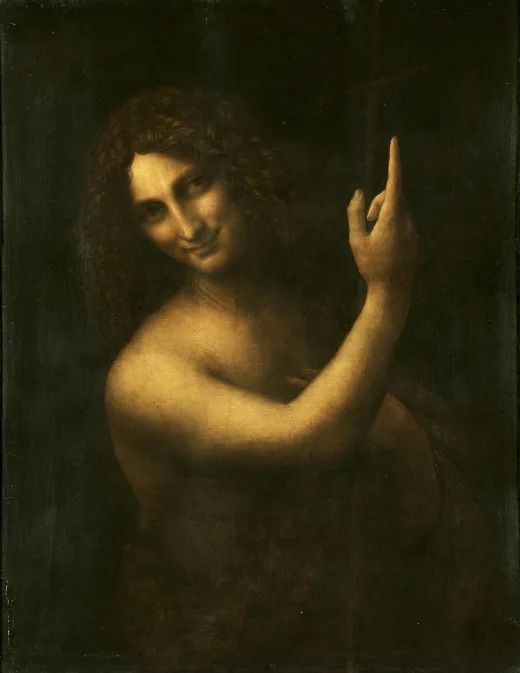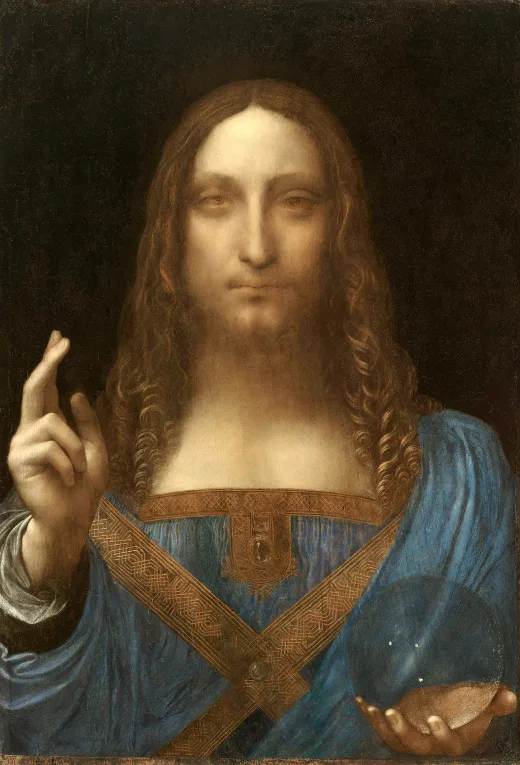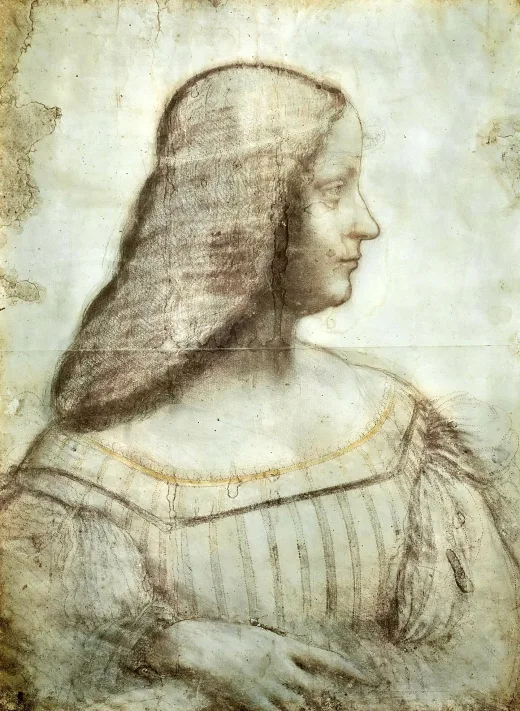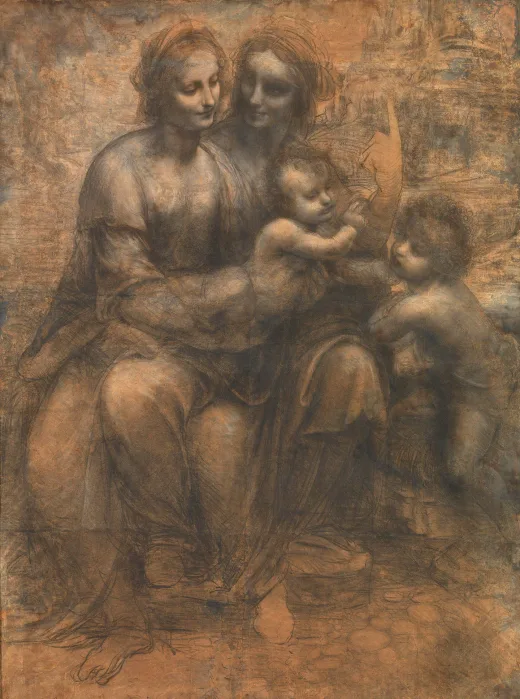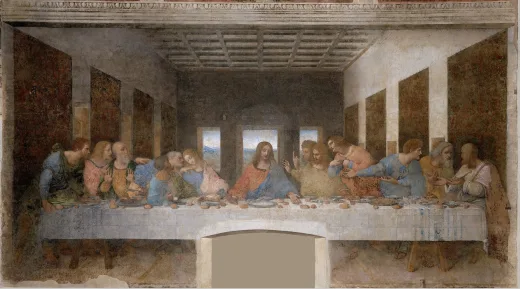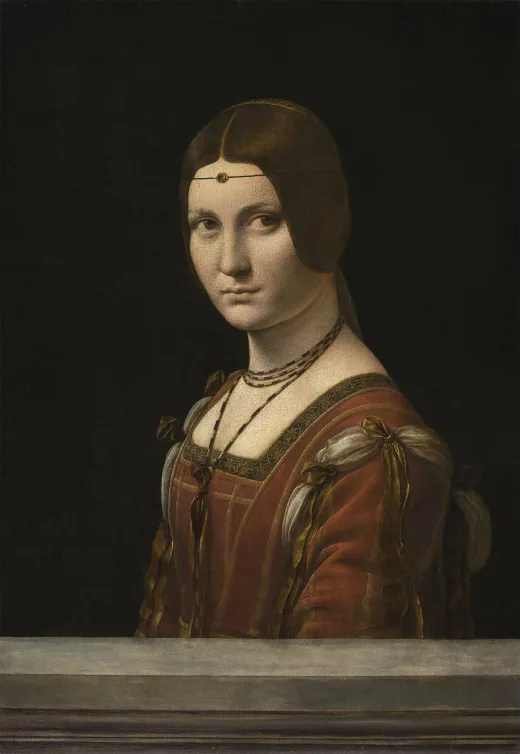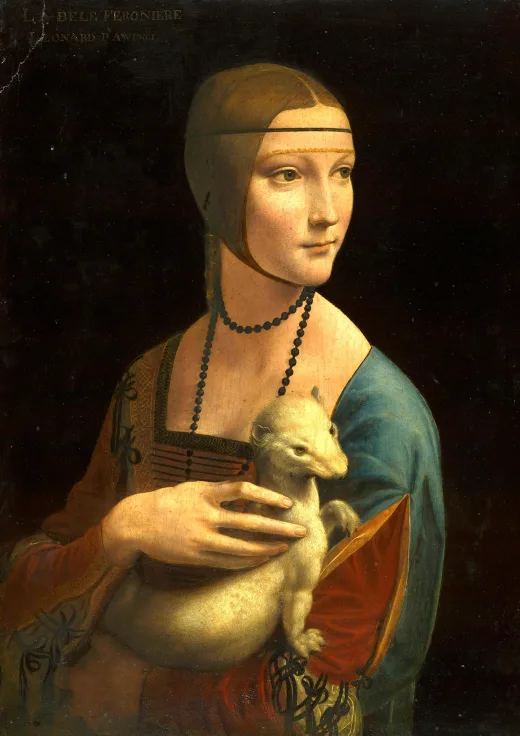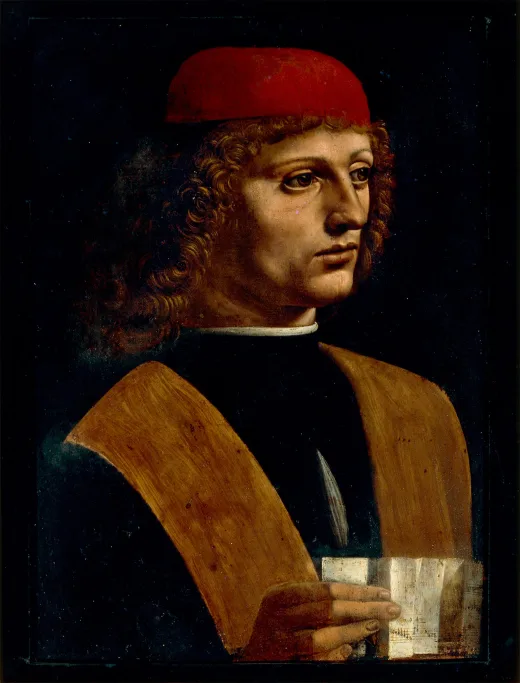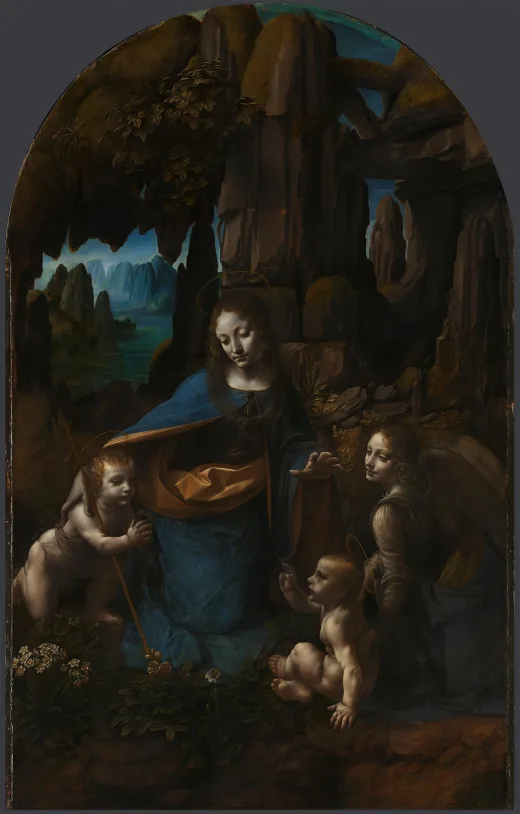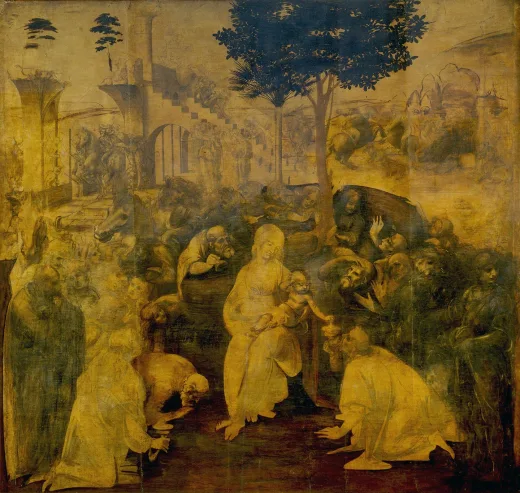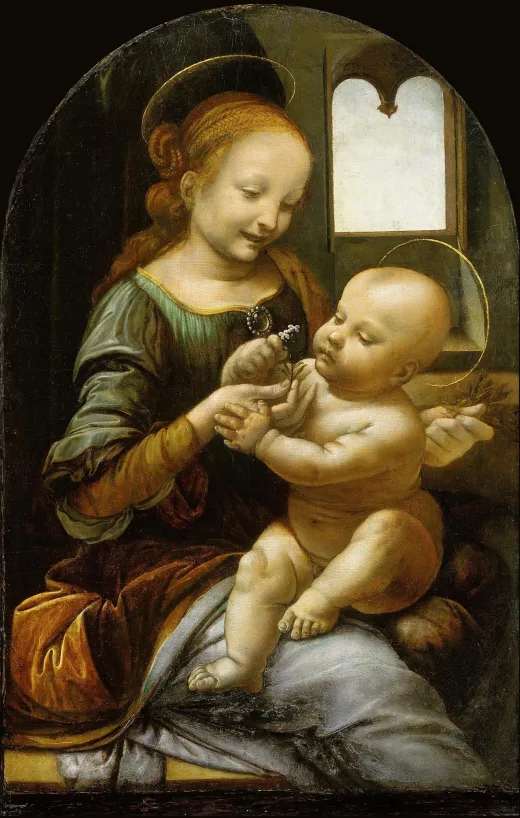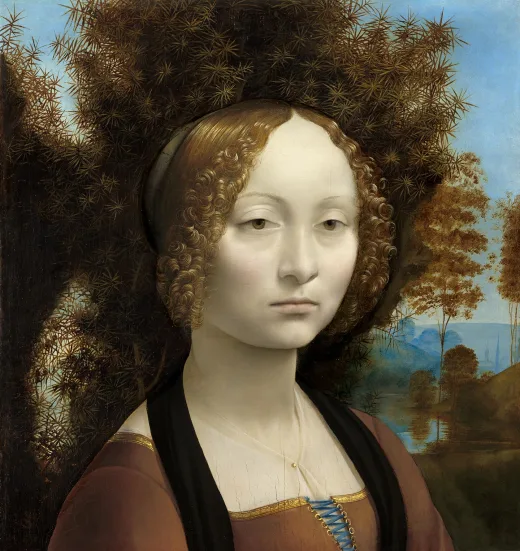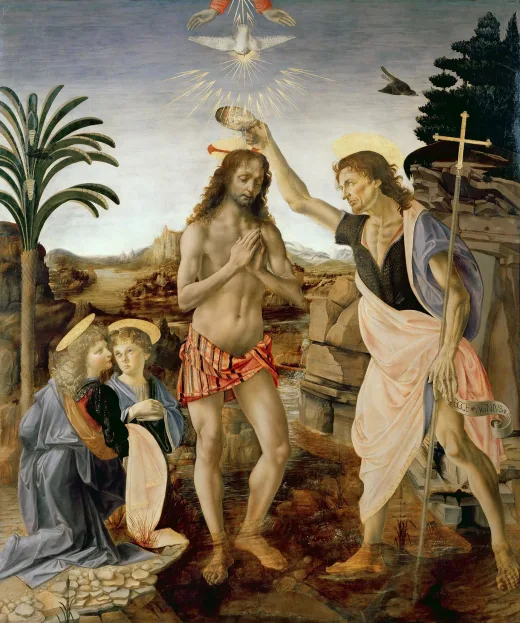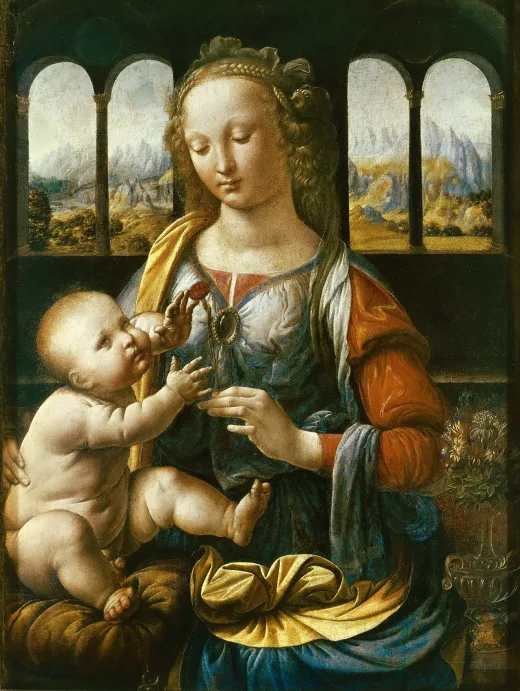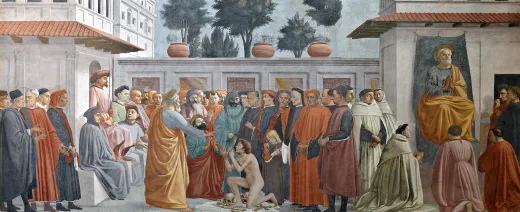马萨乔圆形画作品《出生纪念盘》高清图片
原图尺寸:8660×4429像素(350 DPI)高清图
下载原图消耗2艺点
文件大小:21.09 MB
下载格式: JPG / ZIP
作品名称:出生纪念盘
Desco da parto
作品作者:马萨乔(Masaccio)
创作时间:约1423年
作品风格:文艺复兴早期
原作尺寸: 直径66厘米
作品材质:杨木板
收藏位置:柏林画廊
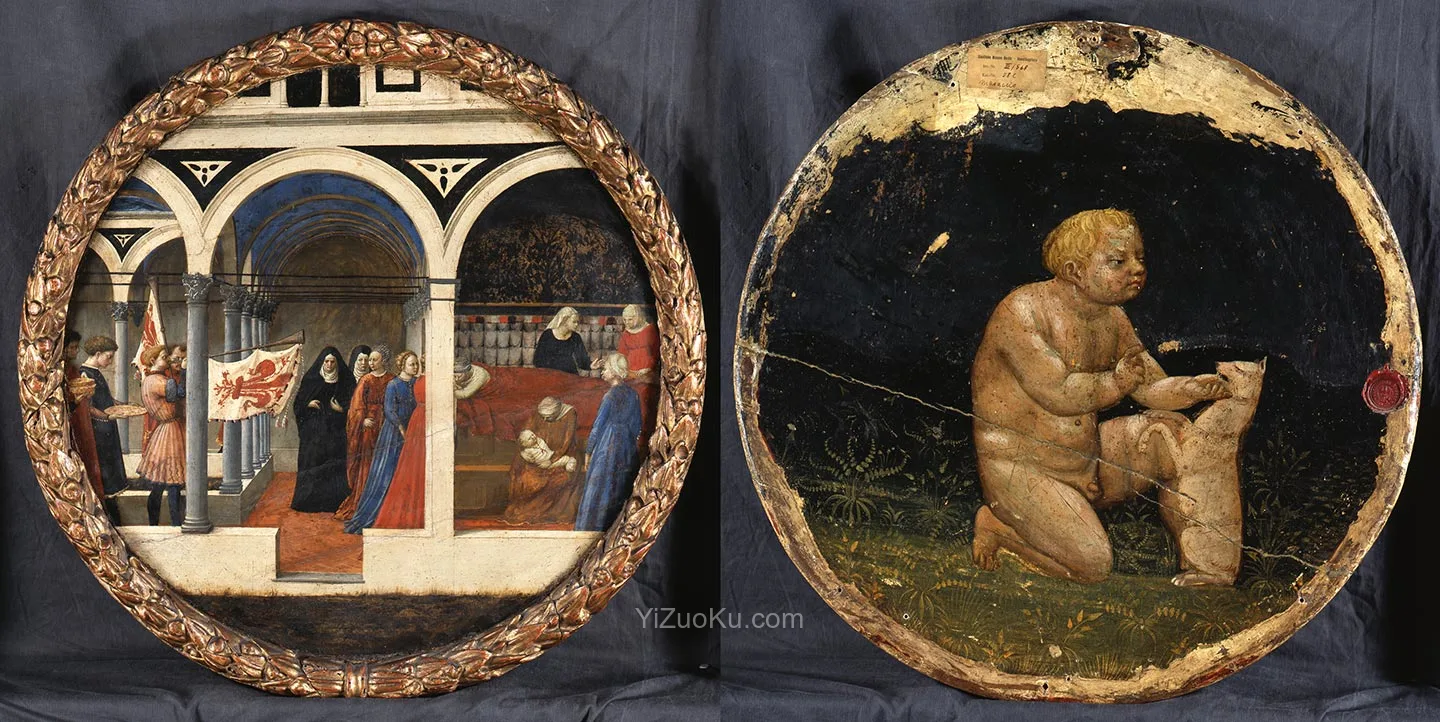
作品简介
这幅通常被称为《柏林圆形画》的作品是意大利文艺复兴画家马萨乔创作的分娩盘(desco da parto)。通过风格分析可见其与画家1422年的早期作品《圣乔凡尼祭坛画》相似,此分娩盘的创作时间应稍晚于该作,约在1423年。加上画框后,这件圆形作品的直径达66厘米。
在15世纪的佛罗伦萨,人们习惯在孩子出生后向家庭赠送装饰托盘,因此这些物品被称为"desco da parto",字面意思为"分娩盘"。这件作品保存相对完好的状态表明它可能从未被用于盛放物品,而是立即被视为无价的艺术品。
托盘正面描绘的场景正是一次分娩——刚刚在右侧房间完成,而一队妇女正从回廊列队前来祝贺。男人们则稍显疏离地站在左侧,等待被允许进入女性的世界。最前面的男人举着一支号角,上面系着带有红色百合花(佛罗伦萨的象征)的旗帜。另一名男子恰好捧着一个分娩盘,完美地构成了这件作品的"画中画"。
这件分娩盘的正面代表了西方艺术发展史上的关键一步:这是现存最早运用数学透视法的绘画实例。这项技术由金匠、雕塑家兼未来建筑师菲利波·布鲁内莱斯基约1415年在佛罗伦萨发明,但其最初的两块示范面板未能保存下来。其原理很简单:所有与画面平行的线条都汇聚于一个消失点,这使得空间表现更具真实感。第一个认识到这一发现重要性的并非画家,而是雕塑家多纳泰罗(其早期应用范例之一是现存于博德博物馆的《帕齐圣母像》)。
20年代初,一位年轻画家领悟了这一发现的意义并加以运用——他本名托马索·迪·塞尔·乔瓦尼,但人们都称他为"笨拙的托马索"(马萨乔)。在这件分娩盘作品完成数年后,他在佛罗伦萨新圣母大殿的《圣三位一体》湿壁画中,以纪念碑式的规模展示了运用透视法描绘壁龛的非凡能力。
人们或许会好奇为何马萨乔选择将场景设置在回廊——这个不仅区隔男女,还划分宗教与世俗的空间(当时分娩都发生在民宅而非修道院)。这个选择与新生的透视艺术有关:排列的立柱是突显画家透视技巧的完美母题。其柱头造型借鉴了古代样式,这当时正成为艺术家们的核心参照。在廊柱尽头、飘扬的旗帜下方,隐约可见衣袍下摆和腿部,表明有人藏在背景中——这再次证明了马萨乔的精湛技艺。更令人惊叹的细节是正进入产房的妇女:她的后半身仍处于回廊空间,而前半身已在墙的另一侧祝贺产妇——同一个人物被表现为两个连续的时间片段。
分娩盘背面描绘了一个裸体男孩与狗嬉戏的场景,其艺术质量远逊于正面。学者们因此认为这出自马萨乔的弟弟乔瓦尼·迪·塞尔·乔瓦尼(绰号"洛·斯盖贾")之手,这位天赋稍逊的画家长年生活在兄长的阴影下。
In 15th-century Florence, one used to offer decorated trays to families after the birth of a child; this is why these objects were called desco da parto, literally birth plate. The relative good state of conservation of the present work shows that it was probably never used to carry objects, but was immediately considered as a priceless work of art. The scene represented on the front of the tray is precisely a delivery, which has just taken place on the room to the right side, while a cortege of women are processing from a cloister to make their greetings. Men are a bit aside, to the left, waiting to be admitted to the ladies’ world. The first ones are bearing a horn on which is attached a flag with a red lily, the symbol of Florence. Another man brings precisely a birth tray, perfect mise-en-abîme of the present object.
The front side of the desco represents a capital step in the evolution of Western art: this is the first preserved example of a use of mathematical perspective in painting. This technique had been invented in Florence around 1415 by the goldsmith, sculptor and architect-to-be Filippo Brunelleschi, in two panels which have not survived. The principle is simple: the lines parallel to the picture plane all converge in a unique point, which gives much more veracity to the representation of space. The first artist to understand the importance of this discovery was not a painter, but a sculptor: Donatello. (One of the first examples of this use was the latter’s Pazzi Madonna, now in the Bode Museum, fig. p. 318 above.) In the early 1420s, a young painter understood the significance of this discovery and made it his own: he was called Tommaso di Ser Giovanni, but everyone called him “the bad Thomas” – Masaccio. A few years after the desco, he would demonstrate his ability in a monumental scale, painting a niche in perfect perspective in a fresco representing the Trinity, still preserved in the Florentine church of Santa Maria Novella.
One may wonder why Masaccio decided to stage his scene into a cloister, a space of separation not only between men and women, but also between religious and lay persons: at that time, births happened in people’s houses, not in convents. This choice has to do with the new art of perspective: the alignment of columns was a perfect motive to insist on the painter’s skills in the matter. Their capitals are inspired from Antiquity, which had also begun to be a central reference for artists at the moment. At the end of that colonnade, beneath the extended flag, one can distinguish a part of a mantle and of a leg, showing that someone is hiding in the background (fig. below left): another proof of the virtuosity of Masaccio. A further astonishing detail is constituted by the woman entering the room where the birth has just happened: one can see the rear part of her body in the cloister space, while she is already congratulating the new mother on the other part of the wall; one person is represented, but it is as if she was seen in two different moments.
The reverse side of the birth tray (fig. above left) shows a naked boy playing with a dog; the quality of the picture is of far lesser quality than the other side of the panel, which had led scholars to attribute it to Giovanni di Ser Giovanni, named Lo Scheggia, the younger brother of Masaccio and less gifted painter.


